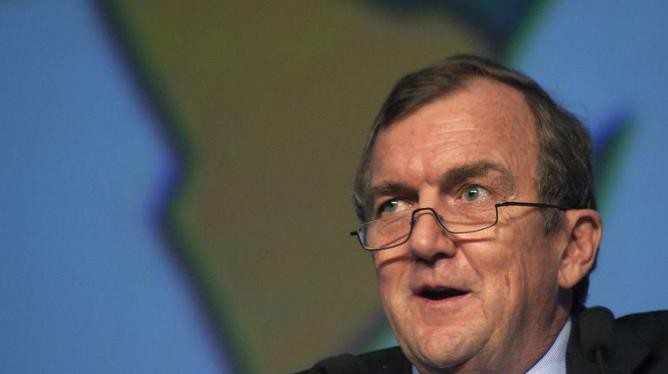
RANDGOLD Resources would have to record average quarterly production of 320,000 ounces over the next three quarters if it was to meet the bottom end of its forecast output this year of 1.25 million ounces, said Credit Suisse.
This follows a difficult first quarter for the UK-listed stock in which production came out at 292,000 oz – 10% down quarter-on-quarter – owing to a combination of factors including an extended period of full sulphide mining at Kibali, a gold mine in the Democratic Republic of Congo.
Mining of the sulphide led to a reduction in recoveries and lower production, but there was also a breakdown of one of the mine’s ball mills which hampered production.
At Tongon, a mine in Côte d’Ivoire, production was negatively affected by the commissioning of the new crushing circuit as well as power interruptions.
All in all, Randgold Resources CEO, Mark Bristow, was philosophical about the production performance. “Kibali returned back to earth after a stellar year last year,” he said, adding that the company would set about remedying its production glitches in the current quarter.
In its first quarter presentation, Randgold did not adjust its production forecast saying it would produce between 1.25 and 1.3 million ounces in the 2016 financial year. Production in the fourth quarter of the previous financial year was a record for the group.
Generally speaking, analysts still believed Randgold represented the sharp tip of the gold sector. “The shares have been very resilient into the numbers, and now face near-term headwinds from stalling gold prices, but remain one of the key shares to own in the sector,” said Johan Rode, an analyst for Barclays Capital.
“Randgold remains one of the most defensive and best positioned gold companies globally, in our view,” said Credit Suisse. “The company’s all-in cost position at the end of 2015 was c$750/oz and we expect this to reduce to c$700/oz through 2016.
“We are more constructive on gold in the short term at least, in a continuingly uncertain macro picture and falling real yields. Longer term we see the potential for further cash returns,” it added.
Bristow said the company had targeted production of about 1.2 million oz for the next five years and said, in mitigation of the relatively weak quarterly performance, that the group’s core competence of exploration (and reserve renewal) meant it had already replaced 76% of its gold reserves last year even assuming a $1,000/oz gold price.
Shares in Randgold were down 1.63% in London on Wednesday (May 4), a reaction that Goldman Sachs said in a report was ‘overdone’, although it remained neutral on the stock. Randgold is currently valued at £5.45bn ($7.9bn) following a 39.5% improvement since the beginning of the year.
Investec Securities said that it had no inclination to change the outlook on Randgold’s production figures for the year despite the poor first quarter.
It added, however, that shares in Randgold had run too hard. “We are encouraged by the cash generation, although a $41m lift in cash is modest in the context of a $3.4bn lift in the company’s market capitalisation over the quarter.











